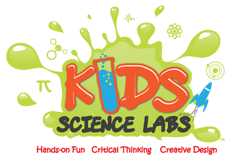It all started in Chicago in 2010 when two dads, friends, and avid problem solvers, Shegan Campbell and Keith Norsym, decided that instead of trying to find a great idea, they wanted to identify a problem that they were passionate about, and fix it. One Saturday afternoon at Panera Bread a few years ago, they asked....
"Why is it that all kids love science until about the 5th grade and then for the rest of their school years treat science as if it were boring, too difficult, or only for nerds? And why is it that in the U.S. we don't actively teach kids how to design, create, build, and fully explore the science that they are curious about? Kids love science, so why do so few have an opportunity to explore it. Isn't science fun, mysterious, and engaging...?" The result was the creation of Kids Science Labs, the best program for engaging kids 2-12 in innovation, creativity, and design.
We want children everywhere to experience Kids Science Labs and we are working hard to make that a reality







